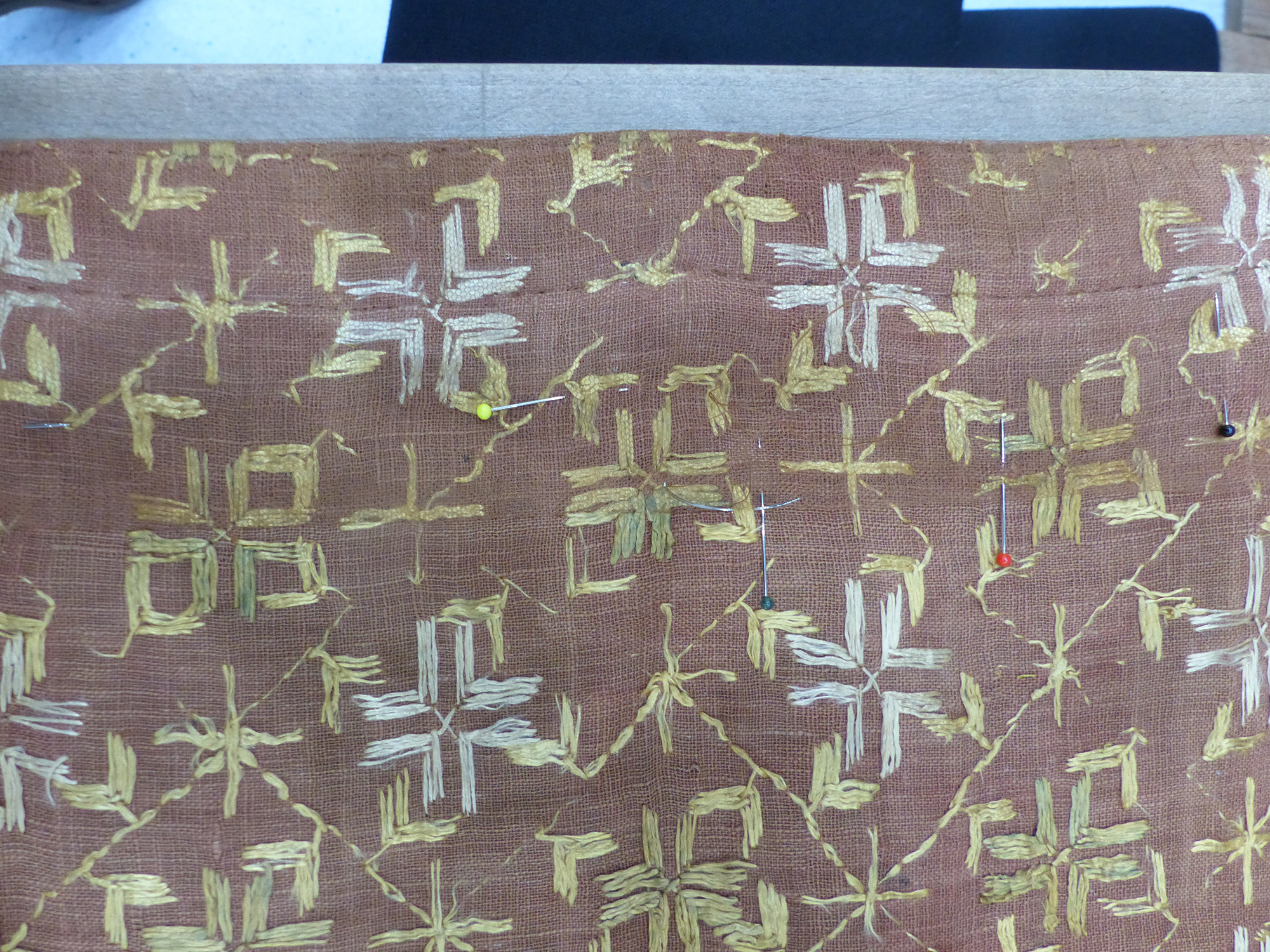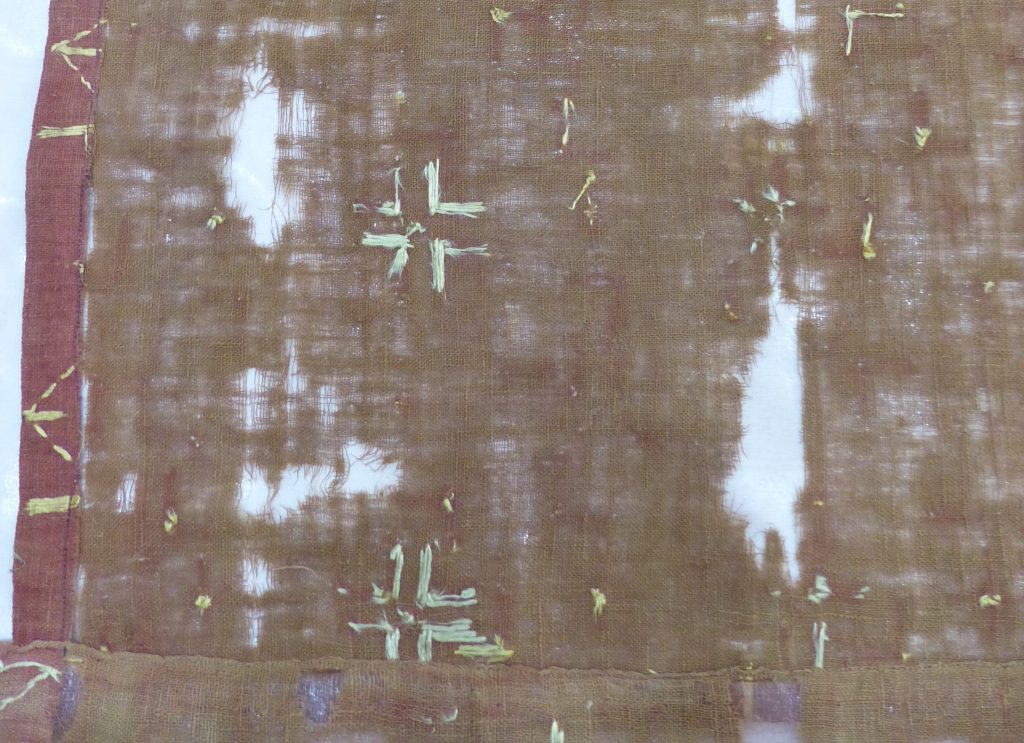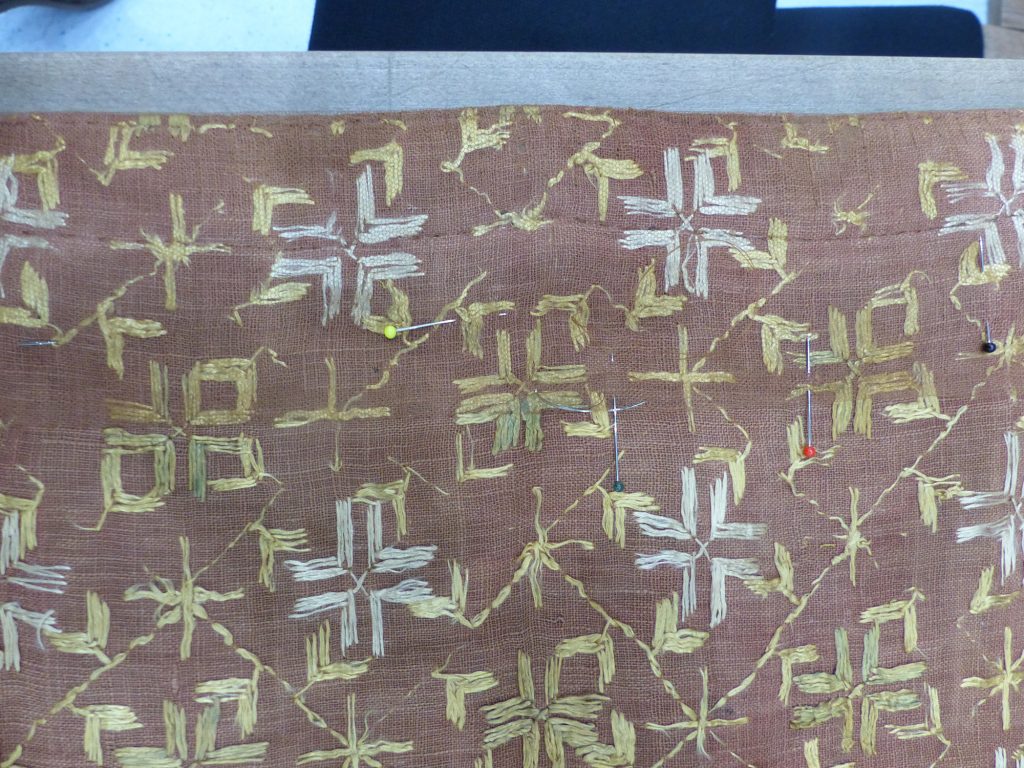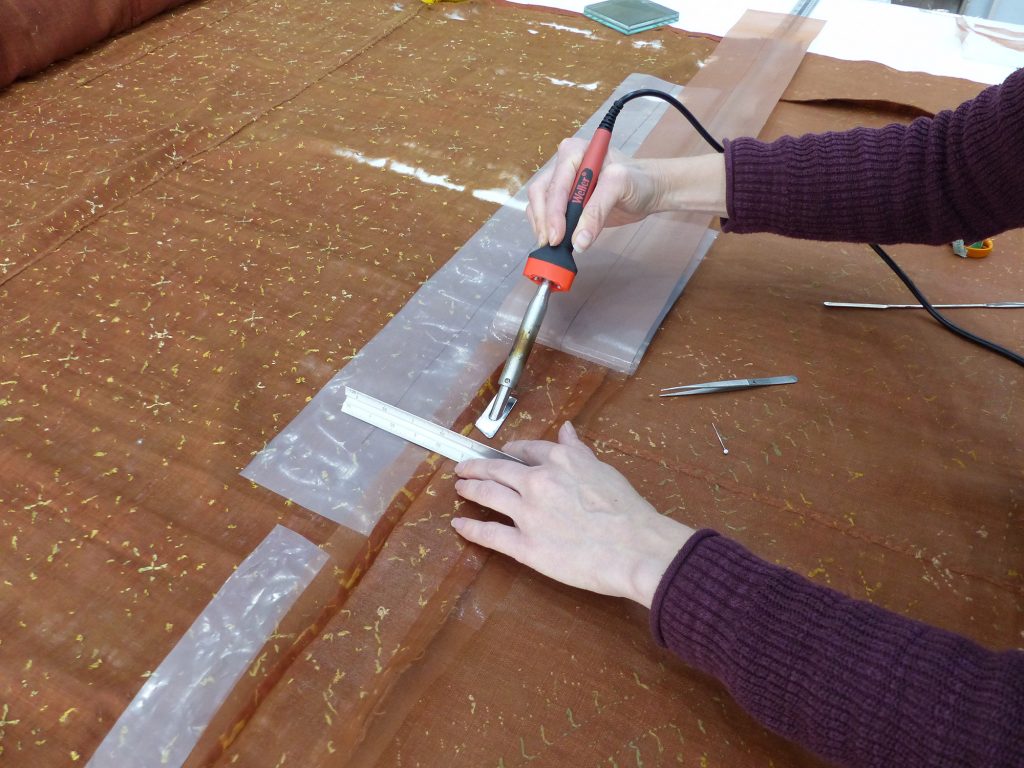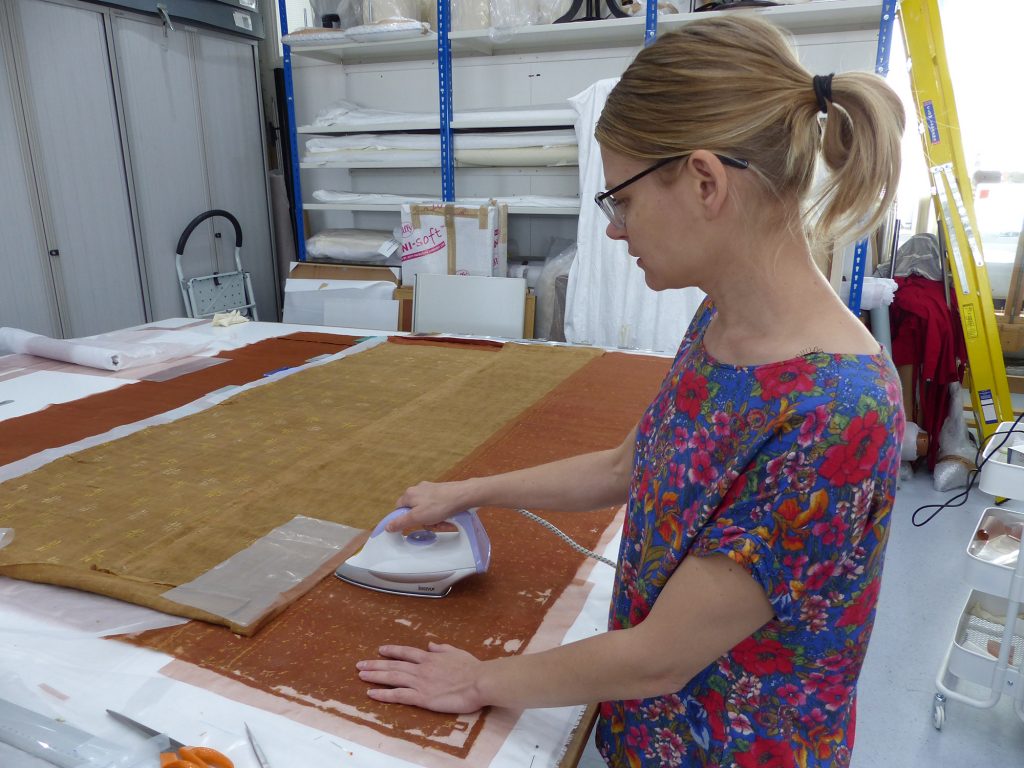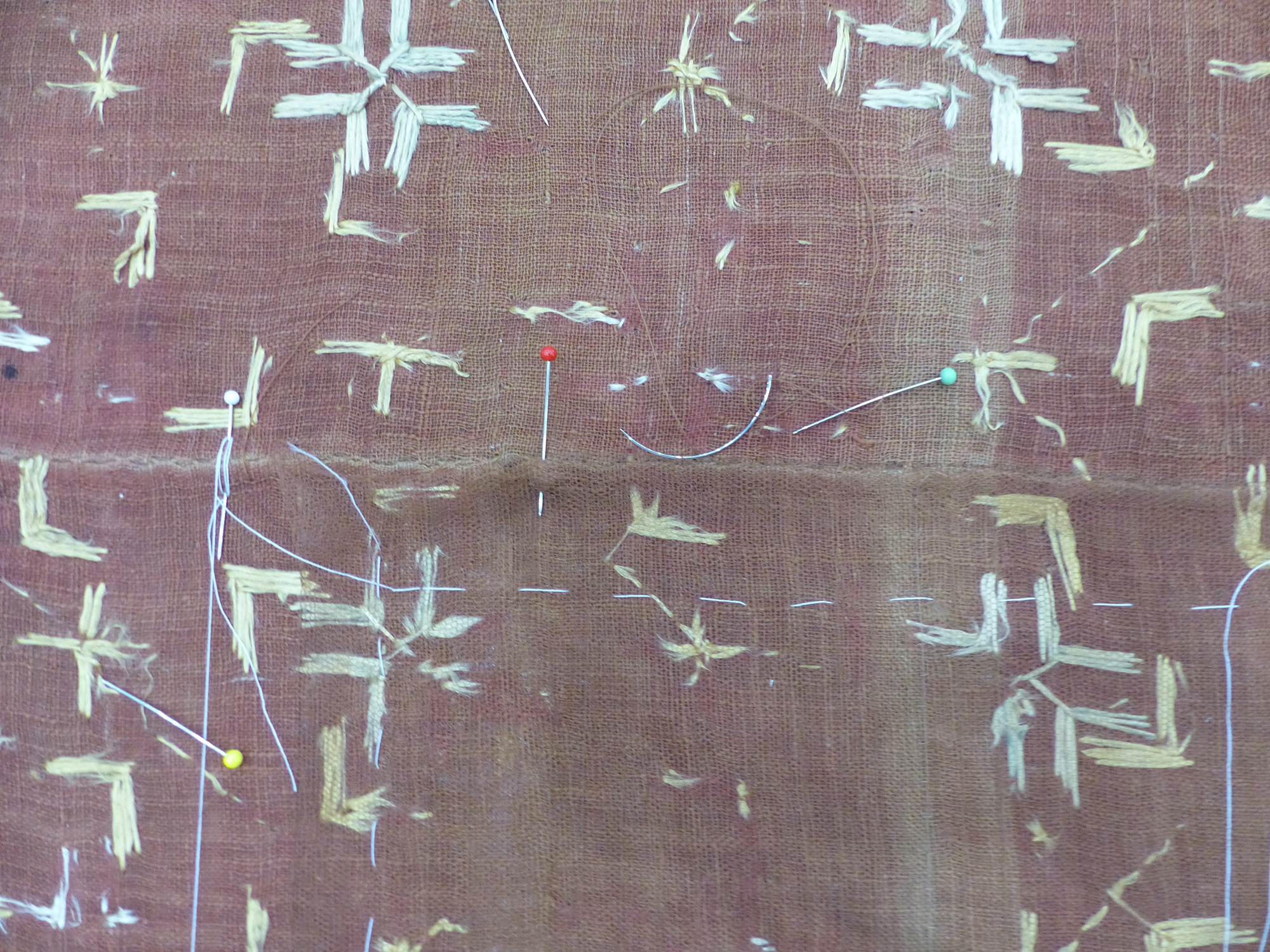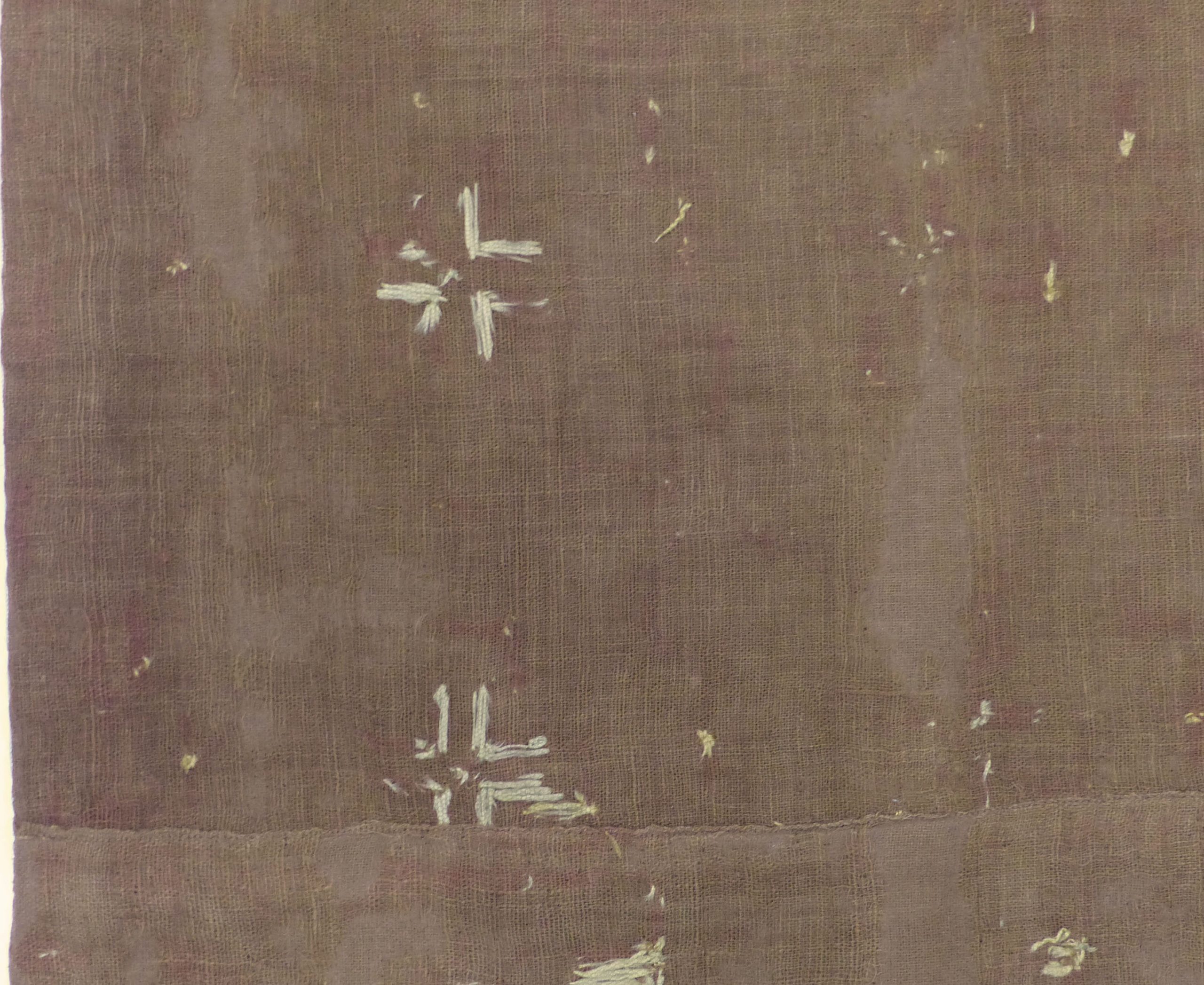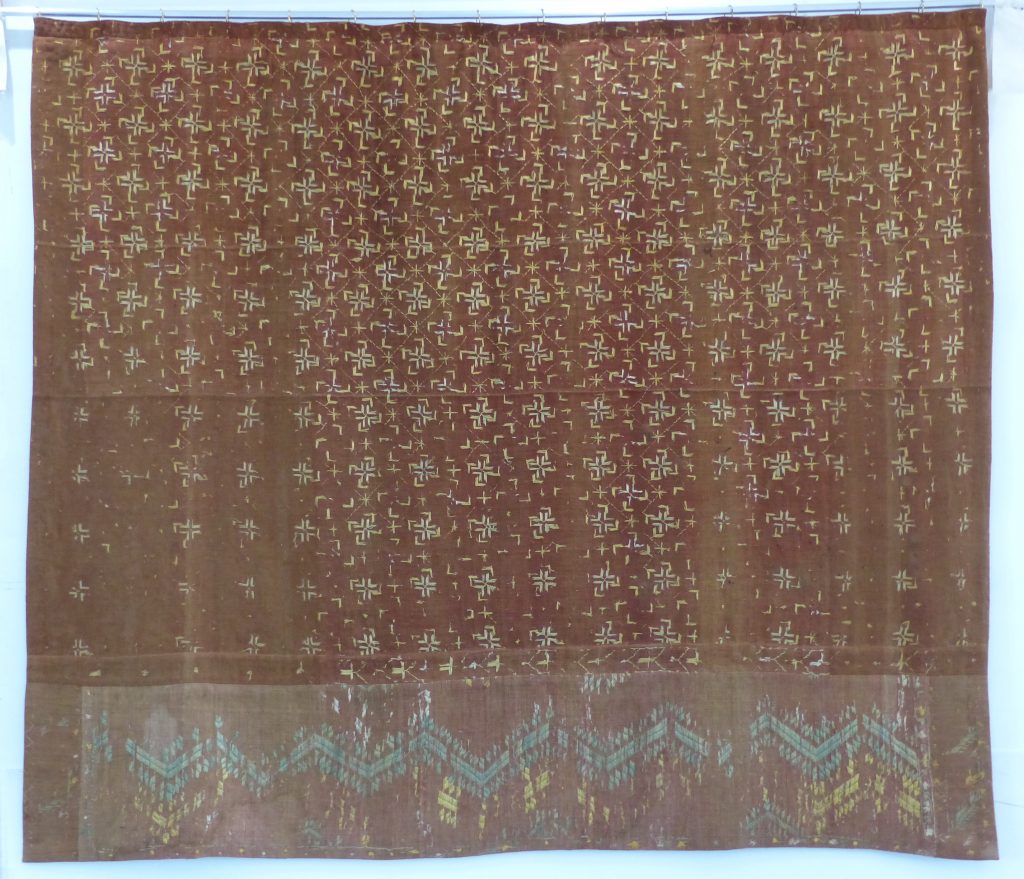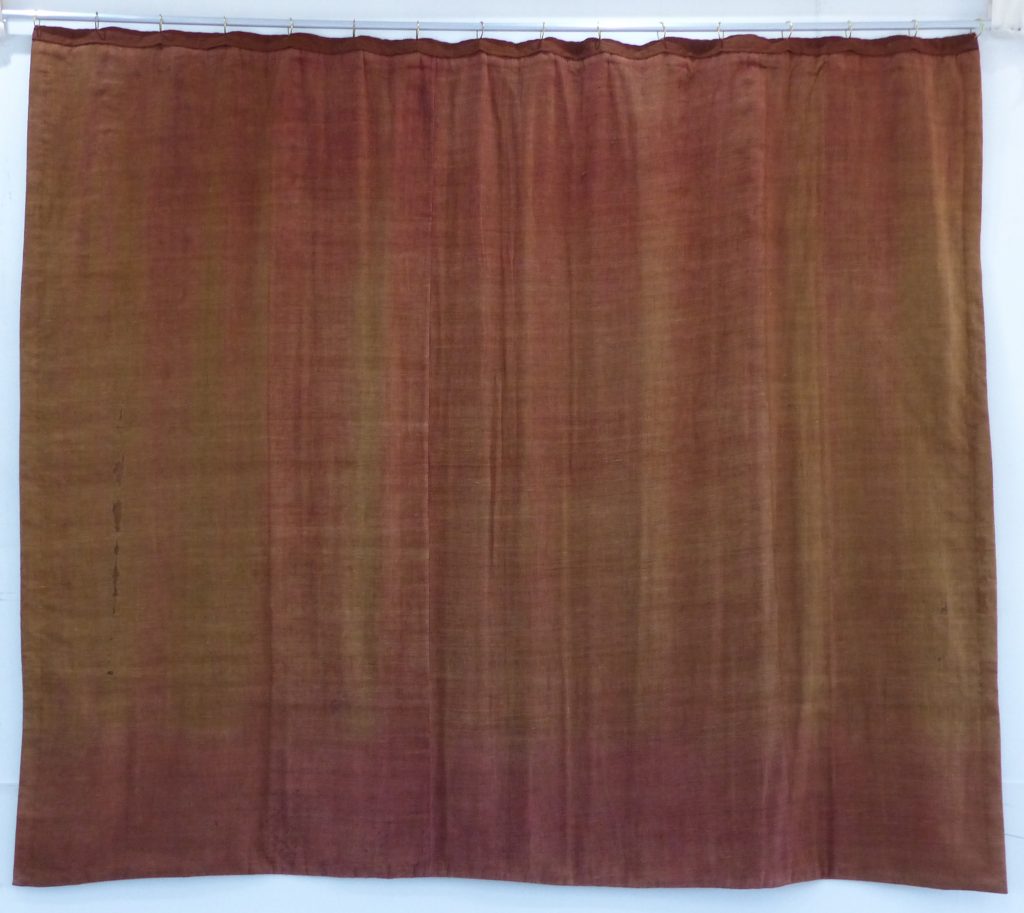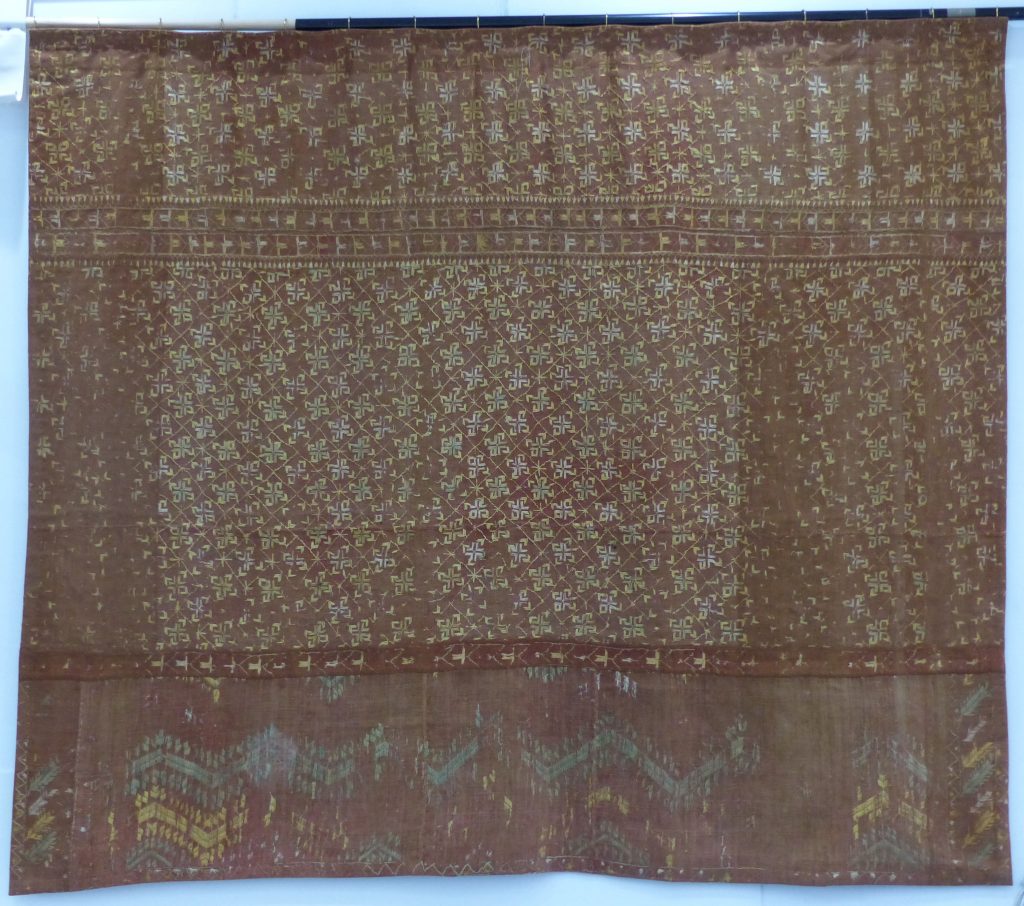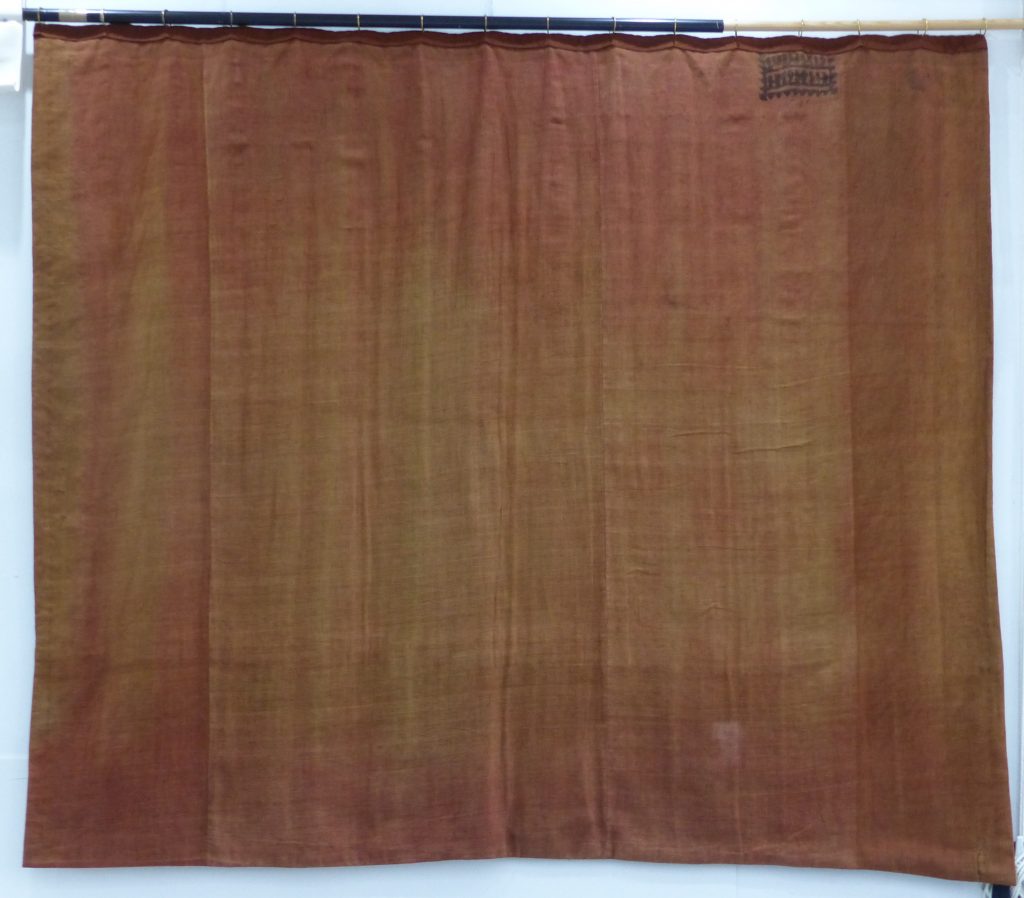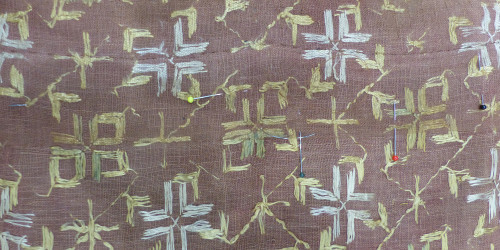
Two incredibly fragile early 20th Century Indian phulkari embroidered cotton curtains from Rudyard Kipling’s study at National Trust property Bateman’s were recently conserved at our studio. It is fascinating to think that Kipling wrote many of his most famous works in this study with his beautiful Sussex countryside view framed by these curtains. The curtains are of huge cultural and historic significance to the property as they are original to Kipling’s time living and working in the house and have Indian provenance making their purchase by Kipling or his parents likely.
In common with many curtains these had suffered massively from a combination of light and mechanical damage along their edges and in stripes that corresponded with the gathered curtain when pushed open. Therefore the ground fabric of the curtains was in a very fragile and brittle condition with many areas of splitting and loss particularly down the leading edges. The original cotton linings were also in a fragile condition, discovered under later replacement linings. The conservation challenges of this poor condition were compounded by their complex construction of the layering and piecing of the original phulkari (a type of wrapping garment) into curtains. The curtains are pieced together from multi-coloured floss silk embroidered textiles with wide range of different hand and machine stitched seams.
To stabilize the curtains it was necessary to provide them with full adhesive supports of custom dyed silk crepeline and an additional support fabric layer with support stitching. The adhesive treated crepeline (20% 2:1 360:489 acrylic Lascaux in water) was carefully heat-sealed to the reverse of the curtains in sections following the construction of the curtains. Because of the closed French seams the adhesive film sections were always positioned over the seams covering the seam allowances with the next section overlapping the last. This provided strength and a multi layered area to add construction stitching. The adhesive treated crepeline was applied using a small heated spatula iron followed by a lightweight hand held flat iron to ensure full, even coverage.
Once fully supported on the adhesive crepeline a sympathetically woven cotton fabric was selected and custom dyed to match. This fabric was used to provide further physical support and good visual infill in the areas of loss. The cotton support layer also act to isolate the adhesive crepeline from the original lining. Again the support fabric was applied following the original construction of the curtain. The seams were stitched through the original seam lines of the curtain and layers were stitched together with staggered vertical fixing lines to provide further structural support.
The damaged areas were supported using laid couching stitch worked in fine polyester thread. The vulnerable side edges were covered with a protective layer of custom-dyed, soft nylon net. The damaged side panels of the linings were sandwiched in adhesive crepeline and dyed nylon net with additional stitching to keep the layers in close contact.
In order to provide a more even, safe hanging it was decided to change the hanging mechanism slightly; custom dyed cotton webbing tape was used to first stitch the rings to using a buttonhole stitch. The tape was then stitched to the reverse top edge of each curtain using a herringbone stitch.
Due to the pandemic the curtains have yet to be installed at Bateman’s but blackout and vision blinds are to be installed first to prevent further light damage. The curtains will installed fixed to remain open with padding placed in the necessary gathers to help prolong their life.
